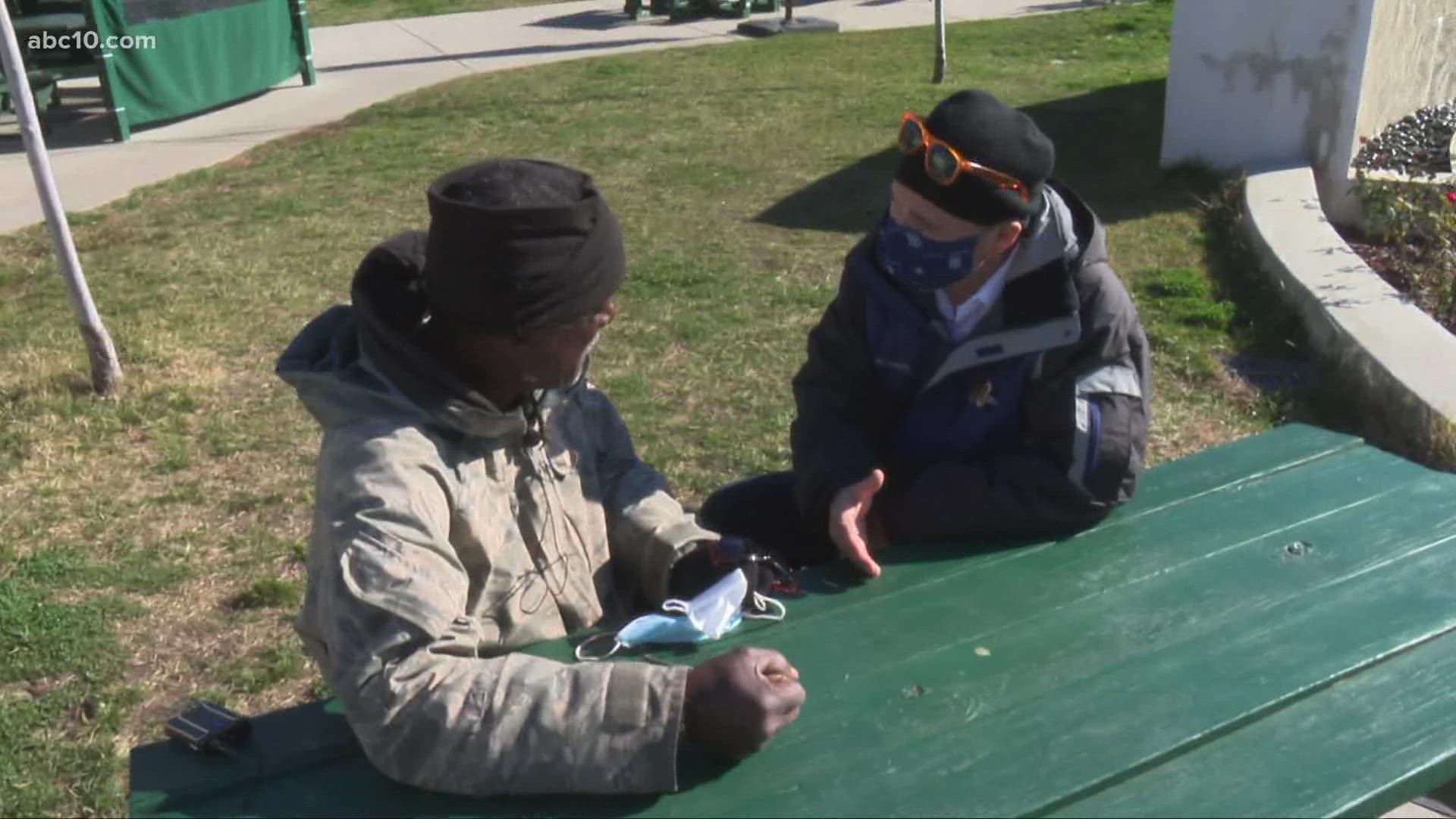CALIFORNIA, USA — This story was originally published by CalMatters.
Getting off the streets and into housing is often touted as a statistical success.
But reality is much more complicated.
Jackie Botts recently took CalMatters readers on an intimate tour of the winding road Fernando Maya, a formerly homeless veteran, traveled from the streets of Los Angeles to a Project Roomkey hotel room to his own studio apartment in subsidized housing.
His story highlights the myriad personal and systemic factors that make it difficult for people to find housing and stay housed – including the collision with a car while bicycling and head injury that hampered Maya’s efforts to rebuild his life.
In the latest episode of “Gimme Shelter: The California Housing Crisis Podcast,” CalMatters’ Manuela Tobias and the Los Angeles Times’ Liam Dillon interviewed Jackie and Maya about his story and her reporting process.
So where is Maya now, and what lays in store for him next?
“Well, I’ve got a door. I’ve got a door with a key. I have seven days a week for cop shows,” he joked.
On being inside, he reflected, “This is always a positive for me, every day. Because it is secure. I have the walls to secure me from the elements, I don’t have crashes blowing by me.”
Jackie recounted first meeting Maya two years ago, while reporting on the state’s food aid program.
“You were excited to talk to a journalist and I remember you saying, like, ‘I can be your eyes and your ears on the street,’” she said. “It just seemed like you had a story worth telling and so we kept in touch and I would just like, check in and ask you little questions.”
The story gained urgency as the state announced a $12 billion appropriation last summer to address the California homeless crisis, a chunk of which recently became available to expand mental health housing and treatment.
But a severe worker shortage in the California homeless services field threatens the state’s ability to massively expand services. Many homeless service workers — who make low wages for high-stress jobs — are burned out.
Maya talked about the importance of case workers to him and other people experiencing homelessness. “Some of us need help,” he said. “Some of us don’t know we need help.”
“Not all the services reach everybody. If everybody was like The People Concern,” Maya added, referring to the nonprofit organization that helped place him in his apartment, “I think that a lot more people would get out. I mean, it has to be quicker. While the construction is going on out there, how is it that nobody’s housed?”
Maya plans to look for a job in food delivery with DoorDash next because, he explains, general relief and food stamps are simply not enough to pay the bills.
His message for Sacramento policymakers: “There’s a lot of people out there on the streets that complain about the same thing: that the rent is too high. Now, I don’t know who’s responsible for that at the end of the day, but I mean, it can’t just be about whoever the governing body is.”



















